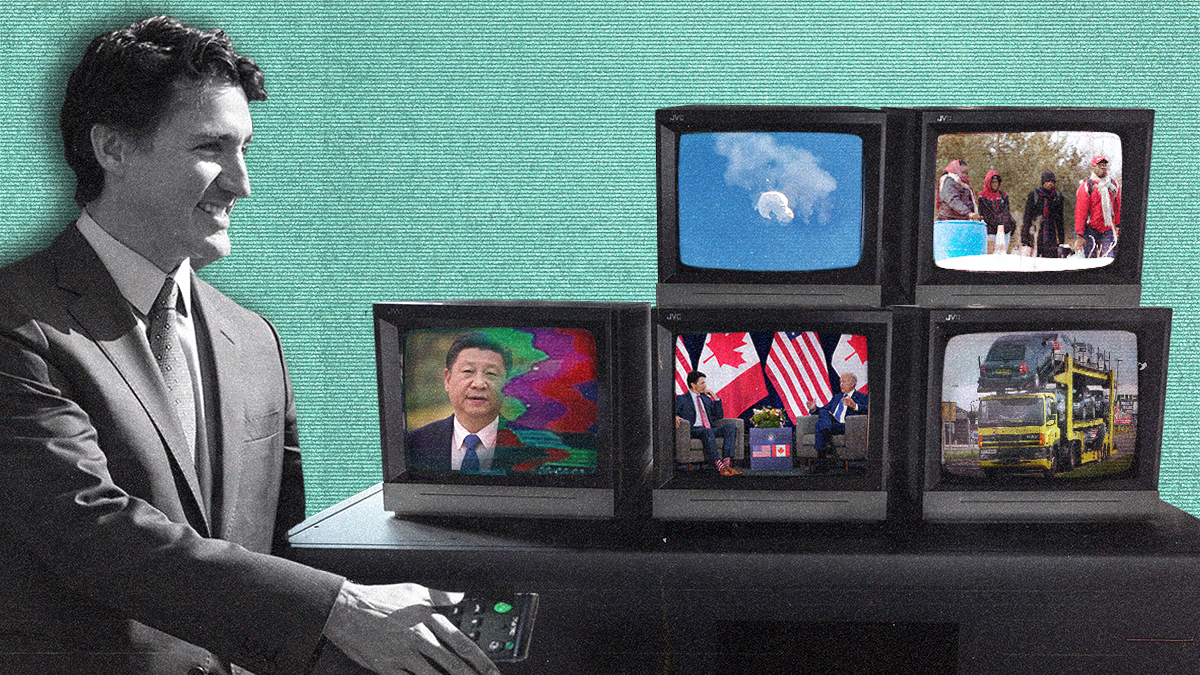Whatever else Joe Biden accomplished in his recent visit to Ottawa, he helped his friend Justin Trudeau change the channel away from a damaging scandal about Liberal inaction in the face of Chinese election interference.
The scandal, which the Liberals had handled with customary awkwardness, was running out of steam anyway. But Biden’s arrival and the 2023 budget that followed gave Trudeau the opportunity to shift attention from whatever it was they didn’t do in the past about Chinese meddling to what they will do in the future with their friend Joe.
The big announcement? A deal to amend the Safe Third Country Agreement, which allowed Canada to close the irregular border crossing at Roxham Road. This removes a huge political irritant for Trudeau, who must keep Quebecers onside if he is to win another election.
But on the big economic question — how Canada will respond to Biden’s massive Inflation Reduction Act — the Liberal plan may not keep businesses from heading south to take advantage of enormous incentives Washington is handing out to anyone with a clean energy project.
Canadian Finance Minister Chrystia Freeland, who wrote her budget with New Democratic Party Leader Jagmeet Singh looking over her shoulder, described the economic plan as fiscally prudent, but nobody calling for prudence thinks that’s what she delivered. The budget projects increased spending and a final departure from the government’s own fiscal guardrails.
Bay Street (Canada’s financial sector) seems unimpressed, but Freeland appears to have had little choice but to go deeper into the red, given the need to keep Singh onside and respond to the IRA.
The Canadian government is rightly nervous about this $350-billion package, which offers huge open-ended tax credits for clean energy projects, raising the fear of capital flight south. In Ottawa, Biden talked about the benefits to Canada of closer integration of the two economies, pointing to jobs in Canada packing semiconductors that are produced in the United States. But there are other sectors he didn’t mention, such as biofuels, that are exposed to American inducements.
In the budget, Freeland announced 16.4 billion Canadian dollars ($12.1 billion) in tax credits for clean tech and billions more for the Canada Growth Fund and the Canada Infrastructure Bank, all with the goal of jumpstarting clean tech projects in Canada. But even when planning to spend so much that Bay Street economists are grumbling, it’s not clear it will be enough to prevent capital flight.
The government will argue that the investment tax credits are big enough to stop companies from leaving, but that may not be true, says Rachel Samson, vice president of research at the Institute of Research for Public Policy.
“I’m not sure that that’s quite the case. I think a lot of investors would like that production tax credit, which pays per unit of product produced. That provides a lot of certainty on the return from investment. But from a government point of view, that’s fiscally risky.”
The industrial measures in the budget are “too late in the game,” says Robert Asselin, senior vice president for policy at the Business Council of Canada and a former budget director for former finance minister Bill Morneau.
The government ought to have laid the groundwork for this moment in last year’s budget, he says. “Here we are two years later trying to come up with tax credits that are generally good, but as a fulsome response from the government, hard to measure as a whole.”
The upside for the government is that the opposition Conservatives don’t know whether to support or oppose the industrial measures, although they are sure the government is spending too much money.
It may all be clearer when the government eventually gets around to putting flesh on the bare bones in the budget.
Gerald Butts, vice chairman of Eurasia Group and former principal secretary to Trudeau, says two questions remain: “How are you going to ensure all of this new policy achieves its objective, which is to prevent money leaving Canada to the United States? And, more importantly, how do you ensure it is funding decarbonization?”
Biden, Trudeau, and Freeland have changed the channel. It doesn’t mean Canadians will approve of the new program.
_______________
GZERO North is a free weekly newsletter that gives you an insider’s guide to the very latest political, economic, and cultural news shaping US-Canadian relations. Subscribe today.
